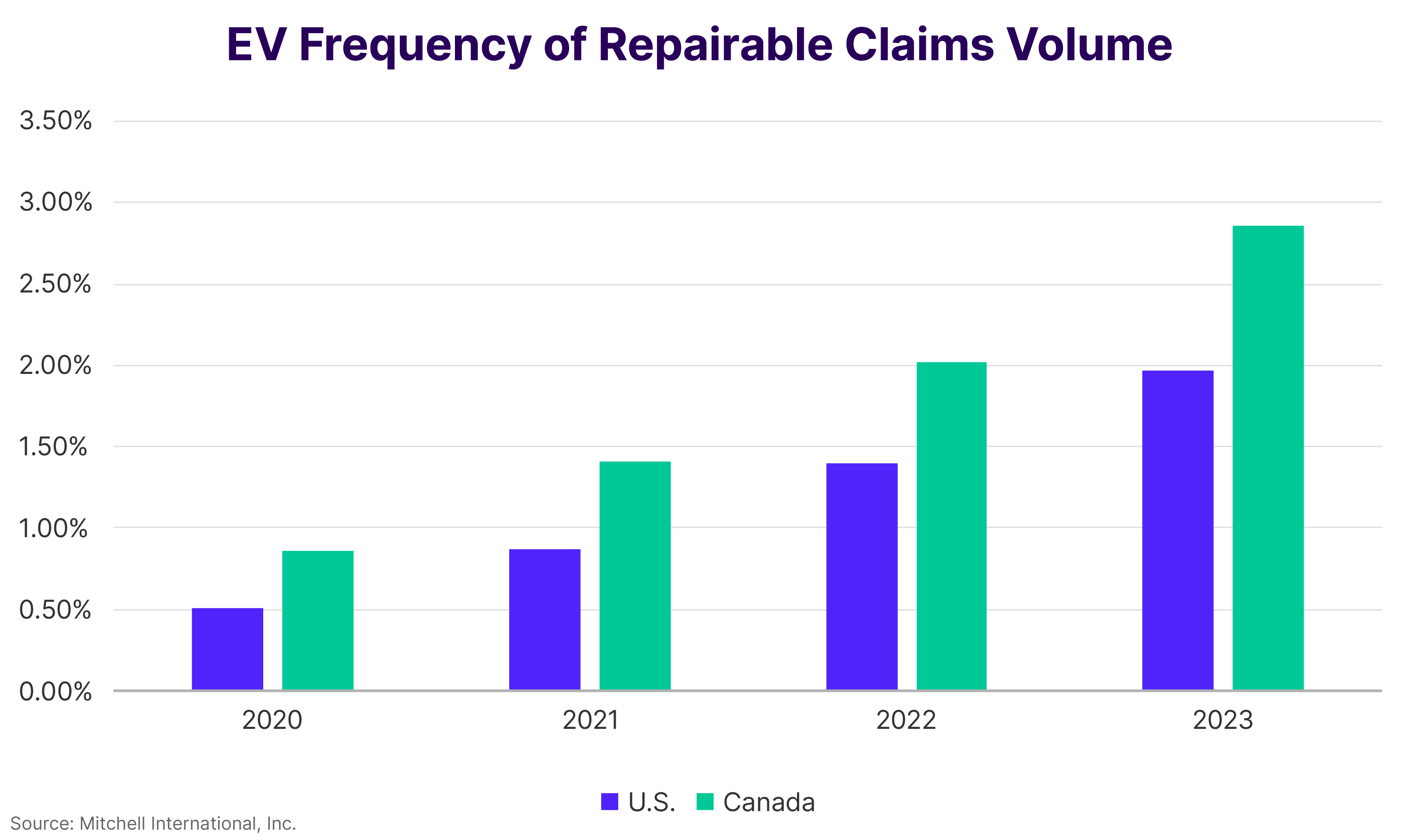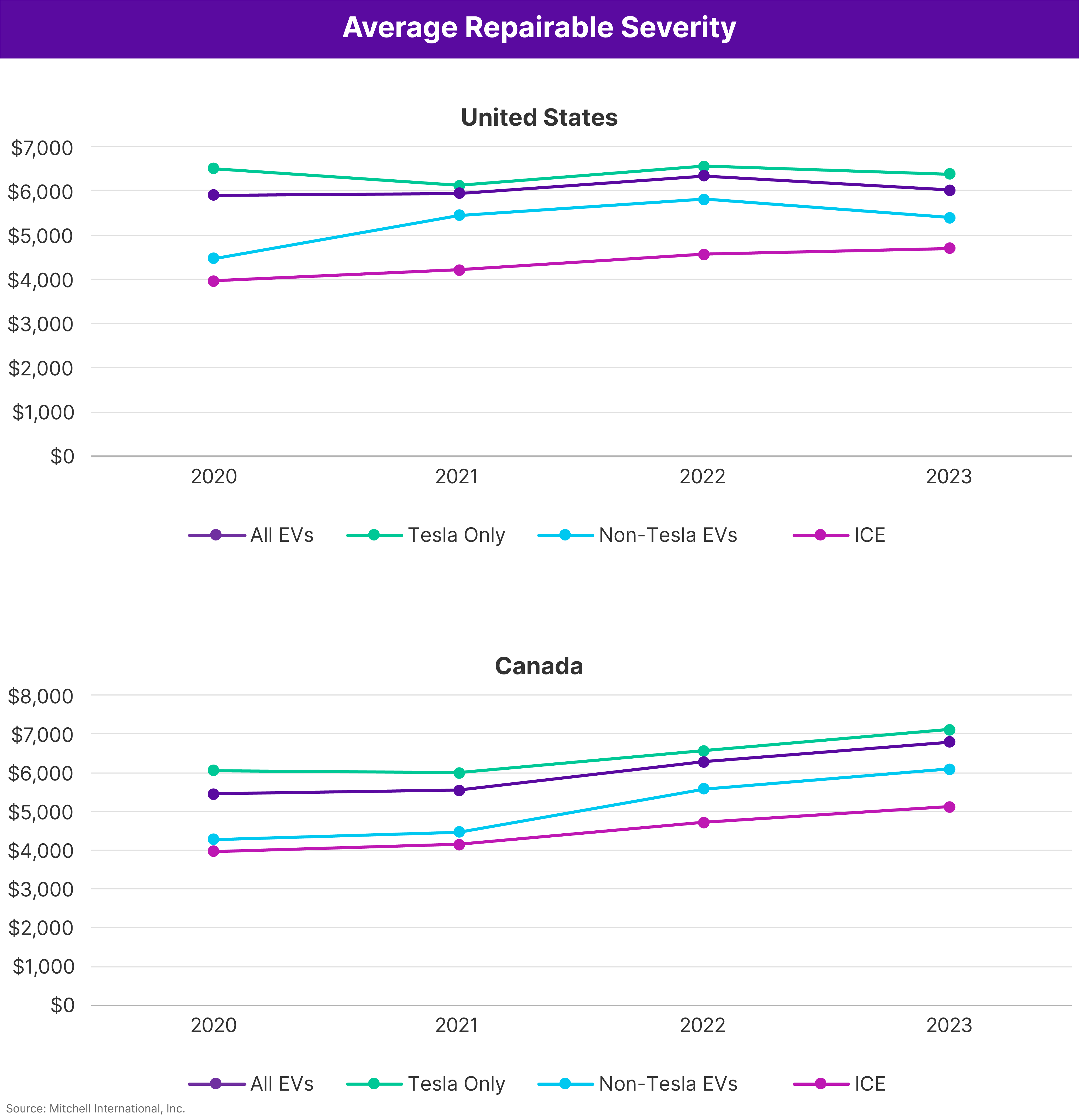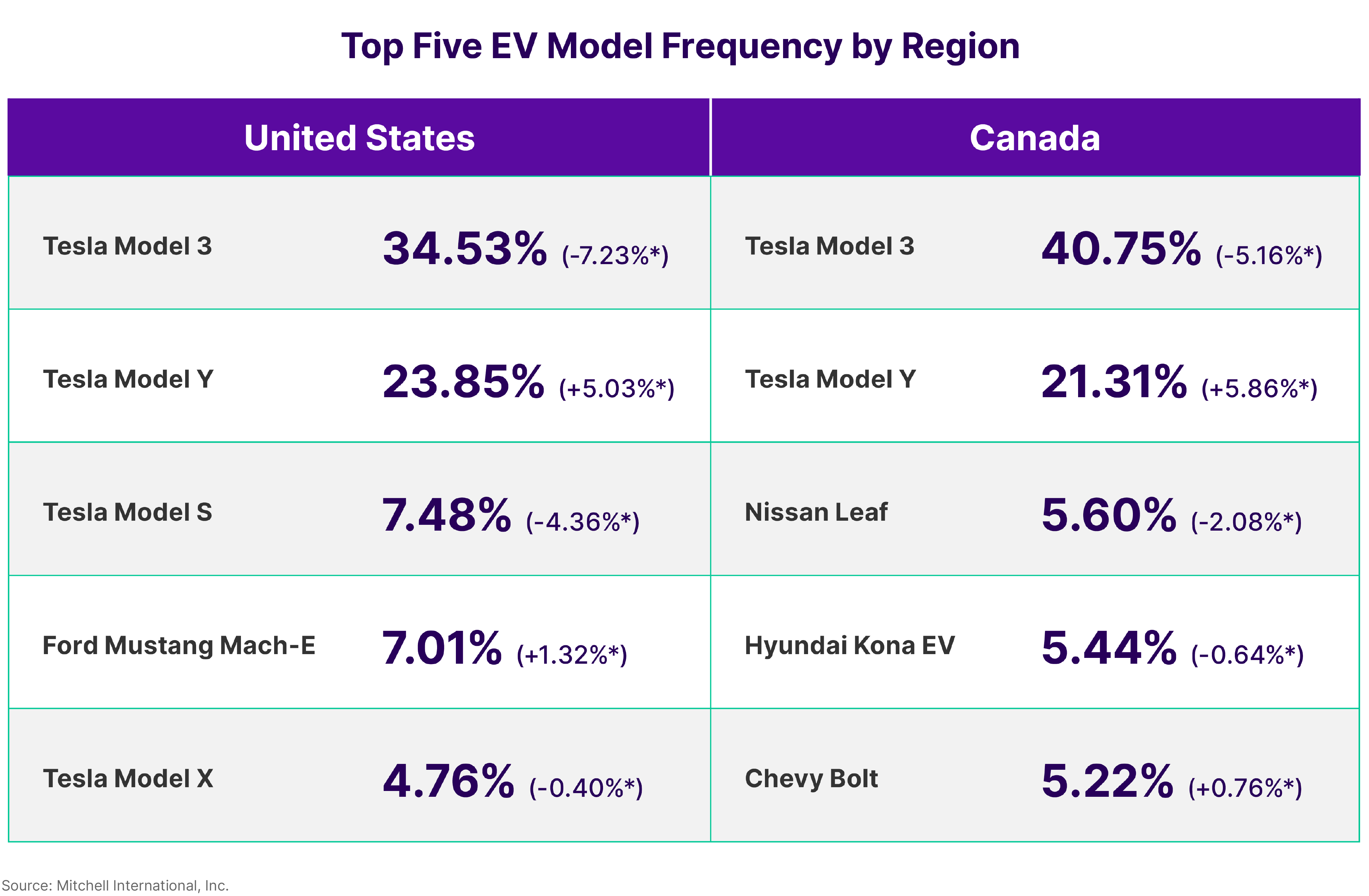2023 ended with electric vehicle (EV) repairable claims frequency at 1.97% in the United States and 2.86% in Canada. That represents an increase of more than 40% in both regions over the previous year. When compared to 2020, the frequency of claims for repairable EVs has more than tripled. Last year, Tesla’s share of total U.S. new vehicle sales reached a record high of 4.2%. However, lower priced EV alternatives like the Kia EV6, Hyundai Ioniq and Volkswagen ID.4 experienced tremendous growth in 2023 (194%, 144% and 139% respectively) versus the previous 12 months—and, with the addition of other new EV models, will challenge Tesla’s market dominance.
In terms of claims severity, EVs continued to exceed automobiles with an internal combustion engine (ICE). Last year in the U.S., average repairable severity was $6,018 for all EVs and $4,696 for ICE alternatives, a difference of $1,322. However, year over year, severity was actually down slightly by about 5% for EVs while it increased by 3% for ICE-powered automobiles. In Canada, it was a similar story with average repairable severity of $6,795 (CAD) for all EVs and $5,122 (CAD) for ICE vehicles. However, unlike the U.S., those numbers rose by approximately 8% in both categories from 2022 to 2023.
“In 2023, average repairable severity was $1,322 higher for EVs than ICE alternatives in the U.S. and $1,673 (CAD) higher in Canada.”
In 2024, sales of new EVs are expected to increase, along with demand for electrified alternatives—resulting in more of these vehicles on the road and potentially in repair facilities. Kelley Blue Book reported that nearly 1.2 million EVs were sold in the U.S. in 2023—representing 8.1% of the gross new vehicle sales volume with an anticipated U.S. market share of 10% in 2024. According to the U.S. Department of Energy, there are approximately 2.5 million EVs registered in the country, accounting for just about 1% of the overall vehicle population. Across the border, one in 10 Canadians own an EV. While some note a decline in Canadian consumer interest, it is still expected that more than 10% of gross new vehicle sales in Canada will be for EVs—with the country outpacing U.S. EV sales on a percentage basis.
EVs epitomize vehicle complexity with their reliance on advanced driver assistance systems (ADAS) and lightweight materials. For example, EV repair estimates are approximately 50% more likely to include some kind of operation associated with the sensors than those for 2020 model year and newer ICE automobiles based on 2023 data—increasing the likelihood that ADAS calibrations are required to safely return the vehicle to the road and damaged parts must be replaced versus repaired. In EVs, major component sheet metal replacement parts are identified as lightweight materials—those other than mild steel including aluminum, carbon fiber and composites—26.87% of the time compared to 23.42% for ICE vehicles. EV manufacturers rely on a mixed materials construction strategy to help offset battery weight, increase range and improve overall performance—requiring the use of these lightweight parts, which can affect repairability and costs. The fact that electrified automobiles are heavier, on average, than their ICE counterparts may be one of the factors to blame for a higher frequency of EV air bag deployments (3.62%) last year compared to ICE alternatives (2.45%). Collision repairs that involve an air bag deployment are typically three times more expensive than those without one—adding to the repair cost differential between EVs and ICE vehicles.
By the Numbers
*Difference between 2023 and 2022.
Subscribe Now
To subscribe to future issues of Mitchell's Plugged-In: EV Collision Insights report, please complete the form below.







